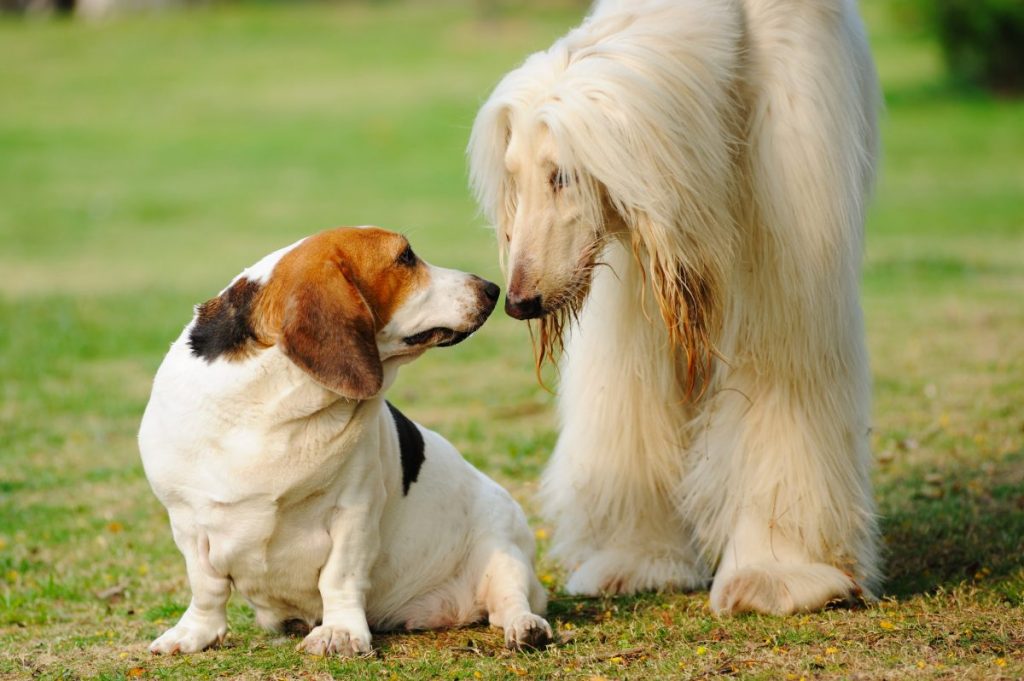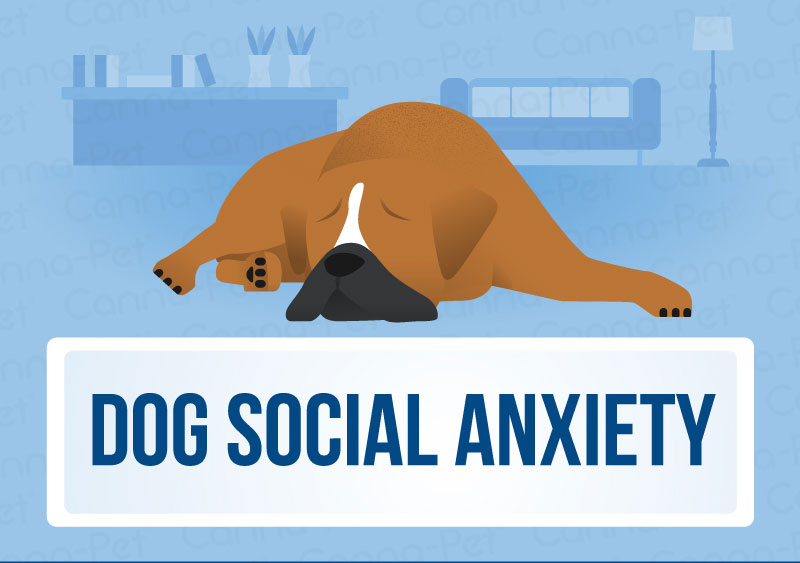Picture this: You’re walking your dog around the neighborhood, enjoying this bit of calm on a beautiful day. Suddenly, you see it: another dog coming your way, ears perked up out of curiosity and excitement.
In any normal situation, you’d be pleased to introduce your dog to this potential new friend. But your dog is not like those other dogs. The lunging; the snarling; the ear-splitting barking—you’d rather not deal with that again. These are all signs that your dog may experience anxiety around other dogs.
Signs and Symptoms of Anxiety in Dogs
Nearly all anxiety is rooted in fear. Anxiety in dogs can range from mild fear to panic, with your dog moving quickly into an offensive or defensive state.
Signs of mild fear in dogs include:
- Trembling
- Tail tucking
- Shrinking away or hiding
- Reduced activity
- Passive attempts at escape
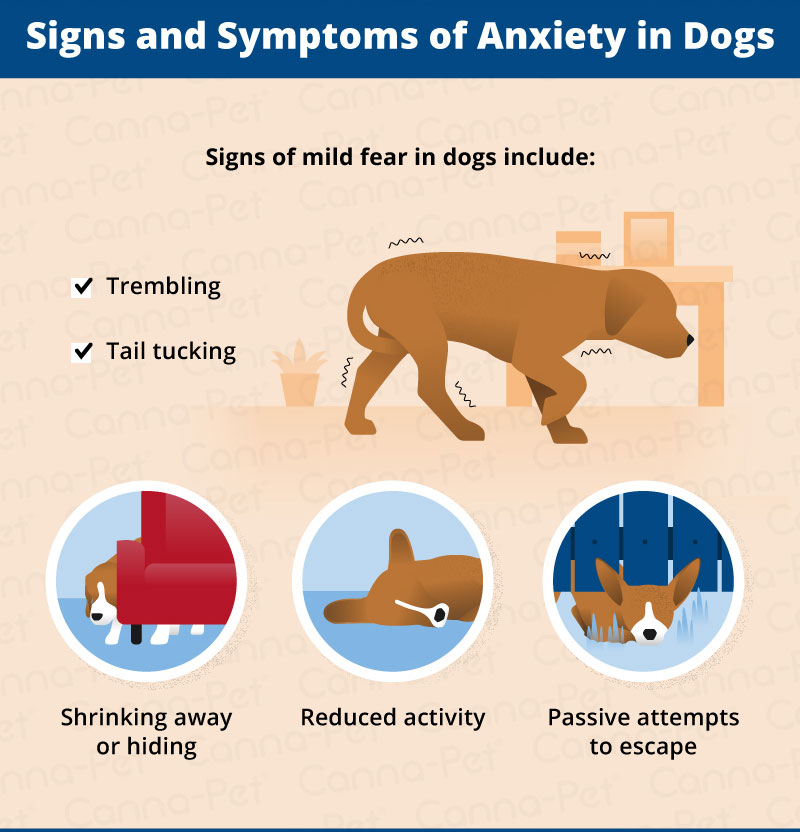
On the flipside, a dog in panic mode will showcase aggressive, potentially harmful behavior, such as:
- Snarling
- Growling
- Excessive barking
- Lunging
- Hyperactive attempts to escape
An anxious dog may also get diarrhea—a sign of the sympathetic autonomic nervous system kicking into gear—or secondary anxious behavior like licking or gnawing the self.
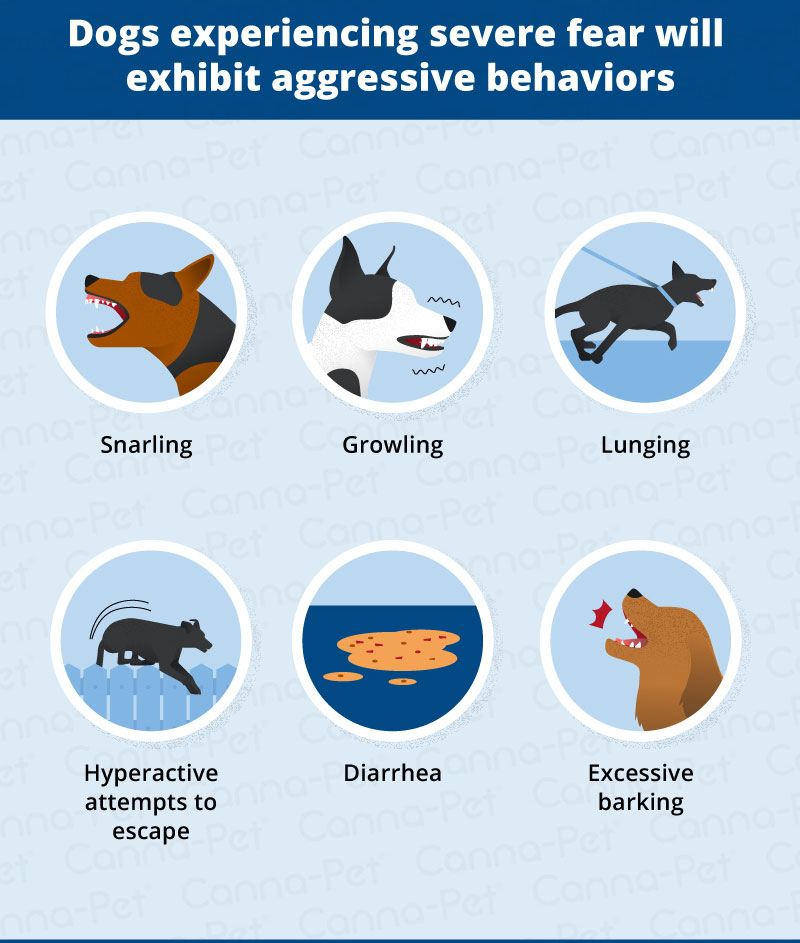
Causes of Anxiety in Dogs
There are several reasons a dog reacts in fear or anxiety, many of which stem from deeper causes such as:
- Lack of exposure to everyday situations, including social ones, especially from a young age
- Ingrained fear from a harmful experience, such as maltreatment or being forced into a frightening new experience
- The fear of being trapped, possibly from a history of being locked up in their crate
- An illness or painful physical condition, which can contribute to the development and increase of fear and anxiety
- Changes with age that can affect the nervous system
- Exposure to harmful elements including infectious diseases or toxic environments like lead poisoning
- Separation anxiety from being abandoned, changing homes, or experiencing neglect


How to Calm Your Anxious Dog
When your dog feels anxious around other dogs, walks to the park become more of a chore than the fun bonding exercise they were made to be. Behavior management is one of the easiest, most immediate remedies to help calm an anxious dog.
Socialization is the process of helping your dog accept parts of normal, everyday life. This can include meeting new dogs or humans, as well as learning how to interact with inanimate objects such as cars, horns, bikes, and the like. When trained correctly, a properly socialized dog is able to walk through a busy area without fear.

Do’s & Don’ts for Socializing Your Anxious Dog
Do start slowly. It’s important that you ease your dog into unfamiliar or over-stimulating situations with patience. With so much stimuli to respond to, dogs can easily become overwhelmed. If you sense a stressful situation on the rise, avoidance is key.
Try introducing your dog to one stimulant at a time. If other dogs stimulate anxiousness, start with just one other dog at a time, specifically one you trust.
Do promote positive association with other dogs. With the other dog at a distance, try feeding your dog treats, but stop when the other dog is out of sight. The point is to change your dog’s perception of others from fearful to positive.
Don’t punish your dog for fearful behavior. Your dog is just as worried, if not more so, than you. Punishing him in the heat of the moment is not only ineffective; it may also make him fear, or turn on, you. When your dog reacts, he’s not thinking straight; don’t expect him to listen in this aroused state of mind.
Do lead the way with calm confidence. Dogs are sensitive to their owner’s cues, and can pick up on even the smallest changes in emotion. If you lead with confidence from a state of calm, your dog will naturally begin to follow his leader.
Try using the “Heel” command before he even has a chance to react. Practicing this (with a healthy amount of treats) will help when faced with perceived danger.
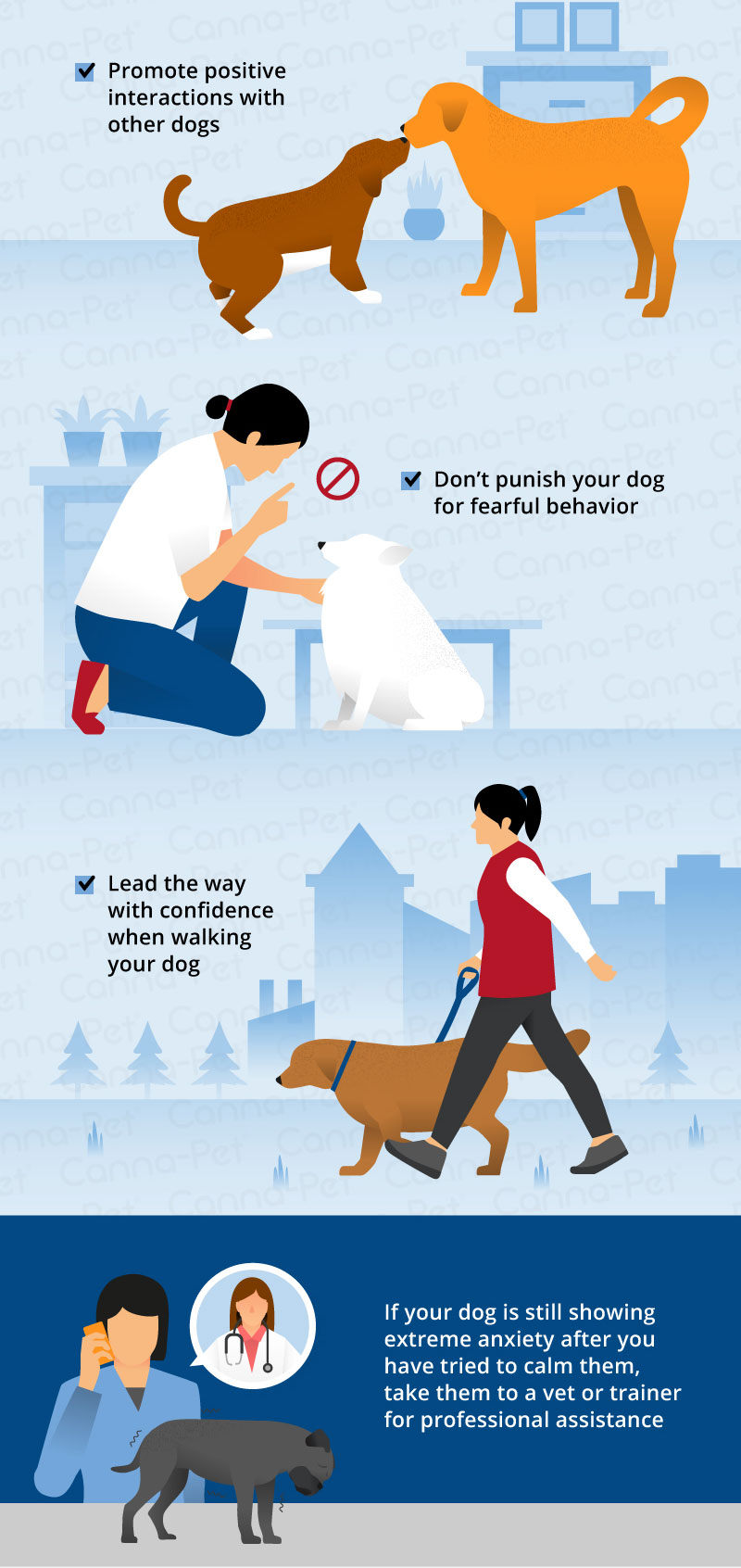
When to Seek Help for an Anxious Dog
If your dog continues to showcase excessive anxiety even after trying behavior management with patience, consider seeing a vet, as well as a trainer. Your vet will help diagnose any deeper causes, which may require further treatment; a trainer will lend the experience necessary to manage behavior.
Take heart. With just the right help, practice, and patience, your dog’s wellbeing can improve
Sources:
- “Could Your Dog Have Social Anxiety?” The Spruce Pets, Accessed 27 April 2017. www.thesprucepets.com/social-anxiety-in-dogs-1112496.
- “How to Train Your Dog to Be Calm Around Other Dogs.” WagWalking, 6 Oct. 2017, Accessed 27 April 2017. www.wagwalking.com/training/be-calm-around-other-dogs.
- “What to Do about a Fearful Dog.” Cesar’s Way, 27 Feb. 2018, Accessed 27 April 2017. www.cesarsway.com/cesar-millan/cesars-blog/what-to-do-about-a-fearful-dog.
- Foden, Simon. “How to Calm a Shy Dog Around Other Dogs.” How to Calm a Shy Dog Around Other Dogs, 21 Nov. 2017, Accessed 27 April 2017. www.dogcare.dailypuppy.com/calm-shy-dog-around-other-dogs-1525.html.
- McQuerrey, Lisa. “How to Get a Dog Un-Skittish Around Other Dogs.” Dog Care, 21 Nov. 2017, Accessed 27 April 2017. www.dogcare.dailypuppy.com/dog-unskittish-around-other-dogs-6703.html.

